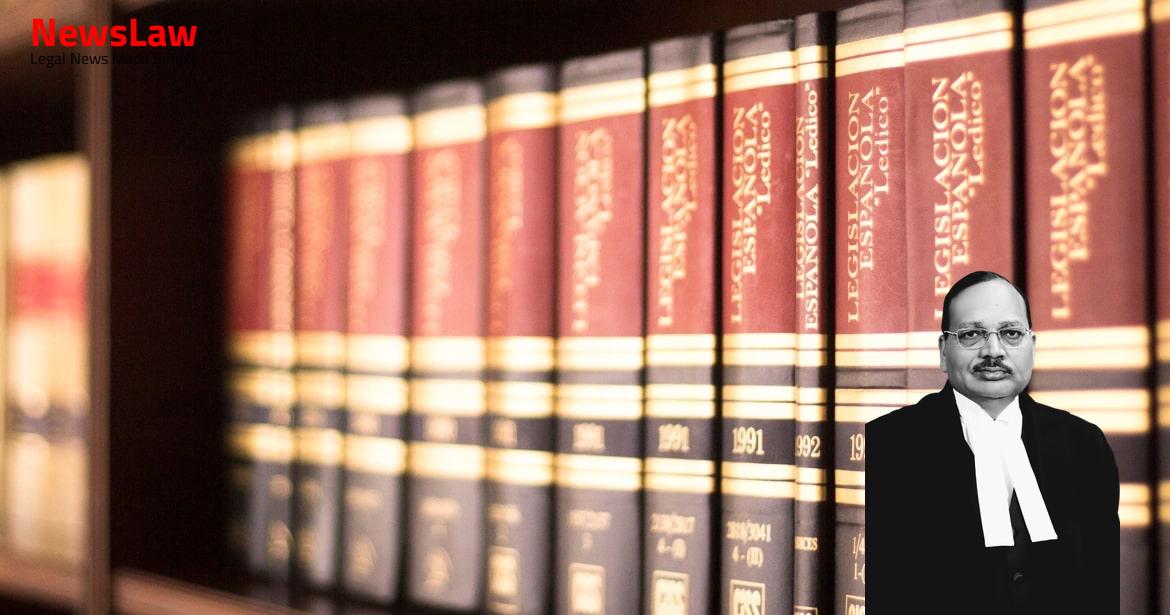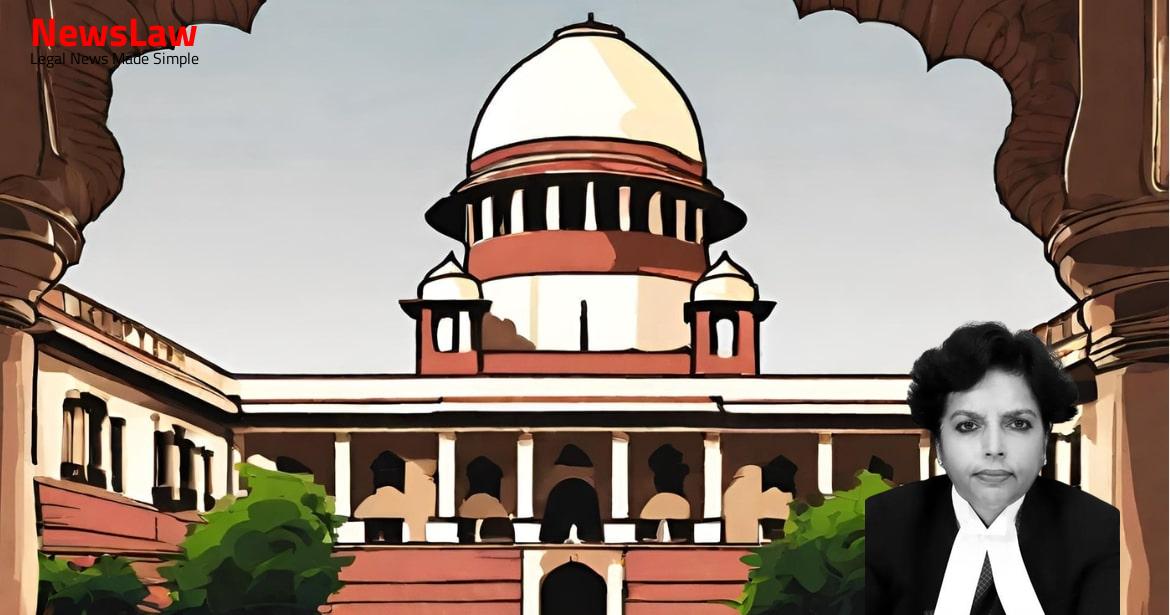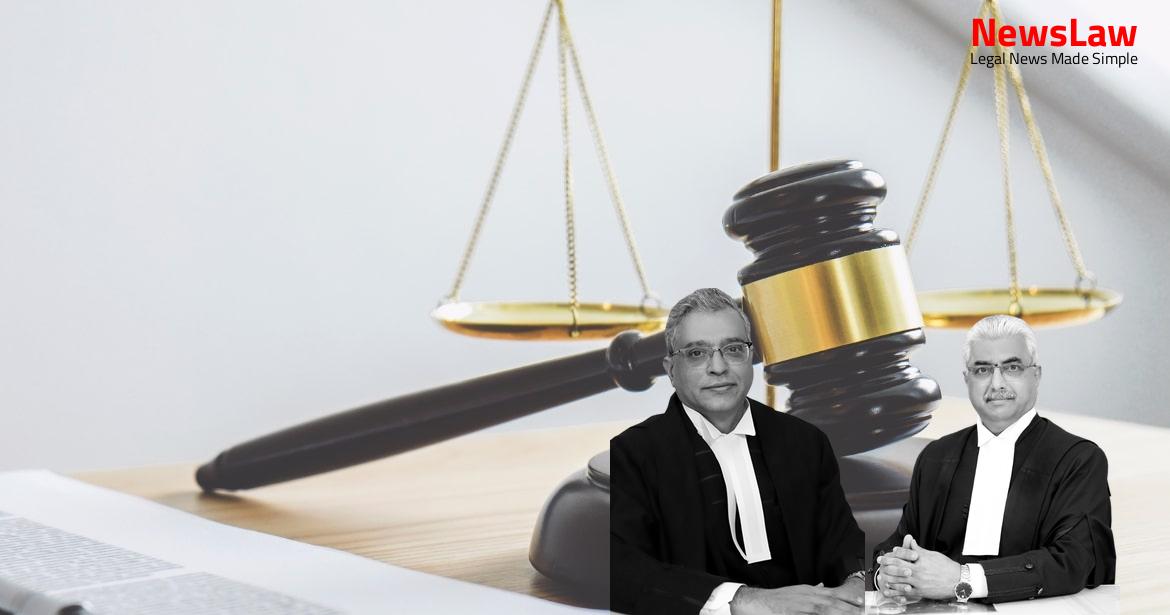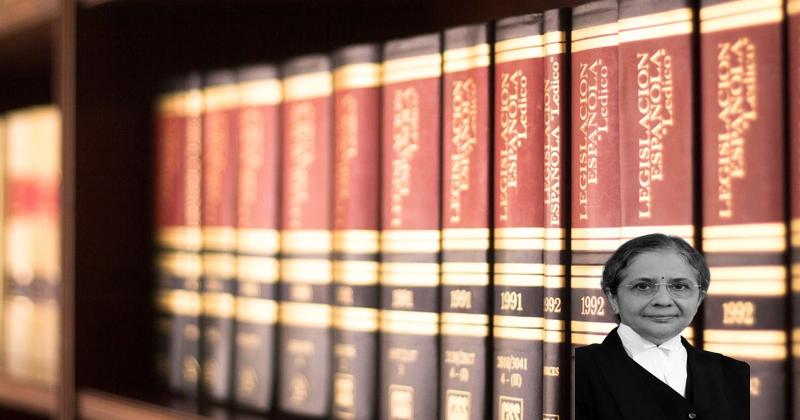In a recent criminal case, the High Court conducted a thorough legal analysis that proved instrumental in ensuring justice was served. By scrutinizing the evidence and applying the law diligently, the court was able to separate valid information from unreliable data, ultimately leading to the conviction of the appellants. This case summary delves into the court’s meticulous approach to reviewing the facts and upholding the principles of justice.
Facts
- The High Court observed that evidence indicated the occurrence took place inside the room despite blood marks elsewhere.
- The first axe blow by Budhi Singh was corroborated by various sources.
- Observation that no marriage function was underway at Budhi Singh’s house on the night of the incident.
- High Court set aside the acquittal of Achhar Singh and Budhi Singh but upheld the acquittal of the other five accused.
- The appellants were held liable for individual acts, not a common intention to kill Swari Devi or cause grievous hurt to Beli Ram.
- Budhi Singh was convicted for offences under Sections 302 and 452 IPC, Achhar Singh for offences under Sections 452, 326, and 323 IPC.
- Govind Ram, as the son-in-law of Budhi Singh, could not have deposed against him.
- The delay in filing FIR was considered due to unavailability of transportation at night and distance to the police station.
- Contradictions between FIR, testimonies, and medical reports noted, but a consistent thread of evidence was found against the appellants.
- Eyewitness Govind Ram did not support the prosecution’s story, and the Gram Panchayat Pradhan’s testimony was inconsistent with the complainant’s narrative.
- No evidence presented to establish unavailability of telephone network in the neighboring village, weakening the prosecution’s case.
- The complainant and his family were attending a marriage function in a nearby village when the incident took place.
- The assailants, armed with various weapons, attacked the complainant and his family, forcing them to seek refuge in their house.
- The complainant managed to escape to the roof and walked 24 kms to lodge an FIR against sixteen villagers, including the appellants.
- Due to a social boycott, the complainant’s family did not attend any marriage function at Budhi Singh’s house.
- The accused individuals were charged with various sections of the IPC for the offenses committed.
- Witnesses testified that Budhi Singh and Narinder Singh were involved in the fatal axe blows that led to the death of one individual and severe injuries to another.
- The accused threatened to kill the complainant’s family if they tried to leave the house.
- The police investigation resulted in a charge-sheet against seven individuals who were involved in the attack.
- During a confrontation later on, the accused shouted for the complainant and his father to come out with the intention to harm them.
- The prosecution’s case alleges that the assailants attempted to kill the complainant and his family on the night of 23.02.1996.
Also Read: Analysis of Suppression of Information in Employment Selection: Legal Perspective
Arguments
- 1.1
- 1.2
- 1.3
- 1.4
- 1.5
- 1.6
- 1.7
- 1.8
- 1.9
- State counsel argued that the FIR is not a substantive piece of evidence and can only be used to contradict or corroborate its maker, not other witnesses.
- The trial court correctly could not identify the definite architect of individual injuries.
- Witness credibility cannot be doubted just because they are related to the deceased or due to minor discrepancies or exaggerations.
- Inconsistent evidence by prosecution witnesses against one accused cannot benefit another accused.
Also Read: Analysis of Cheating and Forgery in Passport Case
Analysis
- The trial Court misdirected itself to wrong conclusions.
- The High Court delineated consistent evidence against some accused overlooked by the trial Court.
- The High Court only acted on consistent and corroborated evidence against Budhi Singh and Achhar Singh.
- The High Court re-appreciated evidence in the appeal against acquittal.
- The distinction between an ‘exaggerated version’ and a ‘false version’ is highlighted.
- The benefit of doubt in cases of intertwined evidence is emphasized.
- The presence of random blood marks does not undermine the core facts.
- The principle of presumption of innocence until proven guilty is reiterated.
- The reliability of witness statements and medical evidence is crucial in determining guilt.
- The reliability of eyewitness accounts despite exaggerations is discussed.
- The importance of separating ‘grain from chaff’ in evidence is articulated.
- The prosecution has the obligation to establish the guilt of the accused unless the presumption of innocence has been statutorily removed.
- Appellate courts have the right to review whether the trial court considered admissible evidence and applied the law correctly.
- Findings contrary to the evidence are deemed ‘perverse’ by the court.
- The duty of the prosecution to prove guilt was described as the ‘golden thread’ in English Criminal Law.
- The CrPC does not differentiate between appeals against convictions or acquittals, allowing the appellate court to consider both fact and law.
- The burden of proof is on the accuser according to the Babylonian Code of Hammurabi.
- Each case must be evaluated based on its own facts, without sweeping generalizations.
- The prosecution has the freedom to choose its witnesses to prove its case.
- Appellate courts should adopt the view favoring the accused when two reasonable views exist, unless perversity is evident in the decision-making process.
- International laws mandate the presumption of innocence of the accused.
- The prosecution should only produce essential witnesses for the case.
- The court should sift through evidence to distinguish truth from exaggeration.
- Homicidal deaths cannot be left to chance.
- Roman Law’s principle of presumed innocence of the accused was highlighted.
- When dealing with a judgment of acquittal, the appellate court must assess the entire evidence to determine if the trial court’s views were ‘perverse’.
- Upon in-depth reading of trial Court and High Court records, it was found that High Court was justified in interfering with the trial Court’s findings
- High Court’s intervention prevented miscarriage of justice by separating valid evidence from unreliable information
- This led to the conviction of the appellants, ensuring justice was served
- Based on the above reasons, the appeals have been dismissed
Also Read: Discrepancy in Date of Birth: Court’s Legal Analysis
Decision
- Achhar Singh’s conviction under Sections 452, 326 and 323 IPC is maintained.
- Budhi Singh’s conviction under Sections 302 and 452 IPC is maintained.
Case Title: ACHHAR SINGH Vs. THE STATE OF HIMACHAL PRADESH (2021 INSC 289)
Case Number: Crl.A. No.-001140-001141 / 2010



